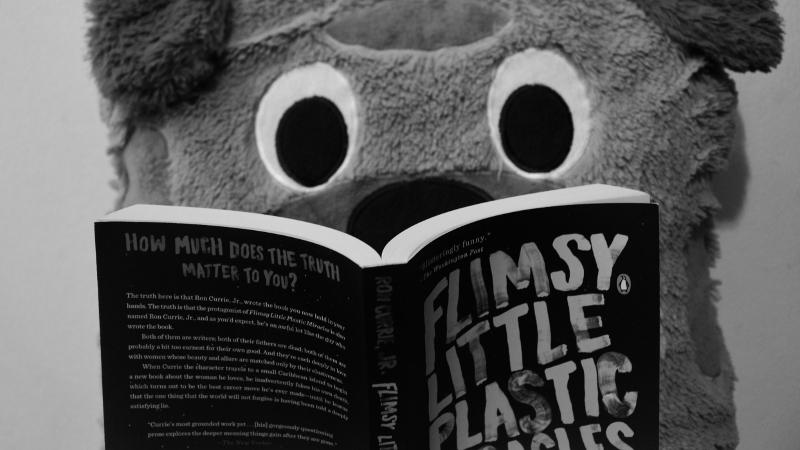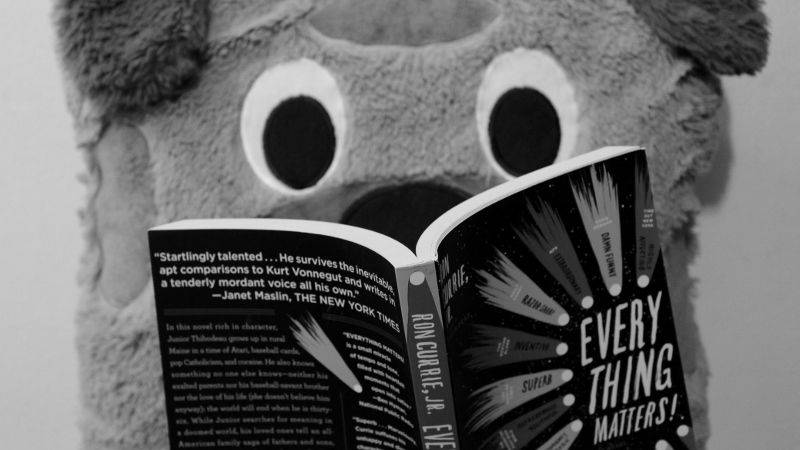I recently completed my MBA at the University of Technology, Sydney. My own shift toward personal development coincided with the commencement of my graduate studies and the two simultaneous pursuits really played well off of one another for the duration of my course. Since putting the finishing touches on my coursework I’ve begun to synthesize many of the larger ideas that were common threads across different subjects including efficiency, responsibility, strategy, and communication.
More than once throughout my course I was struck with the notion that many of the theories and best practices that we were being taught to apply to business could also be implemented at the most micro of levels: ourselves.
This is the working thesis behind a series of posts I’ve lamely dubbed “YouCo.” that will appear over the next several weeks. Think of it like a crash-course MBA that’s all about you. No tests. No accounting requirement. Just the best practices of the business world turned inside out in the name of self-actualization. Let’s begin.
Part One: Mission and Vision
No concept has induced more yawning or eye-rolls in “team building” meetings than that of a mission and vision statement. This is an unfortunate byproduct of the fact that so many mission and vision statements are poorly constructed or don’t reflect reality. Do you know the mission and vision of the company you work for?
Does your boss?
Yes?
Because he wrote it?
Yeah, I thought so.
When appropriately stated and grounded in the reality shared by all members of the organization, mission and vision statements can be powerful rather than groan-inducing. Mission and vision are two different notions, though they are often clumped together. Generally speaking, a company’s mission is a summary of what’s happening now while their vision considers what they’d like to be doing in the future and how they aim to make that ideal future into the present reality.
Examples are fun, so consider this one from my alma mater, West Virginia University:
Mission
As a land-grant institution in the 21st century, WVU will deliver high-quality education, excel in discovery and innovation, model a culture of diversity and inclusion, promote health and vitality, and build pathways for the exchange of knowledge and opportunity between the state, the nation, and the world.
Vision
By 2020, WVU will attain national research prominence, thereby enhancing educational achievement, global engagement, diversity, and the vitality and well-being of the people of West Virginia.
The mission explicitly states what the university is, what they aim to deliver, who they aim to deliver it to, and establishes an ideal framework in which they operate.
The vision, meanwhile, looks ahead and sets a goal of even higher achievement with a specific focus on the people of West Virginia. This vision is in line with their 2020 Strategic Plan, but we’ll save that for next week’s YouCo. entry on strategy.
Is it shocking that a university emphasizes learning and wants to be better at it in the future? Well, no – but that’s not really the point. More than stating the obvious, a mission and vision statement is a checkpoint against which operational decisions can be measured. It is, in essence, the compass that keeps the ship headed in the right direction.
It has to be based in reality and it has to be realizable.
If you were to measure any current student or faculty member against the mission statement you would find either a whole or a broken link in the chain – there is really no middle ground. If the mission is based in reality, you’ll find only one strong chain with no broken links. If it doesn’t reflect reality there will be weak links indicating the mission statement is actually the vision statement and you need to take a step back to reassess.
Your Own Mission And Vision
Though not every group will formally state their purpose and aspirations, most will have at least an informal idea of who they are and where they’re going. It’s easy to see that mission and vision statements are a virtual necessity for even small organizations; all members have to be aligned in order to achieve the best results. But considering the fact that we’re talking about dealing with yourself and yourself alone, why bother with a formal mission and vision statement? Aren’t you always going to know what you want and where you’re going without the need to reference an articulation of those ideas?
Well, sure. It’s not impossible to achieve great results without formalizing the state of your being and your aspirations. Many have done it throughout history and many will do it into the future. However, I happen to believe that stating and continually updating your mission and vision will keep you moving toward actualization at a faster clip while helping you monitor your own progress along the way.
If you look at a photo of yourself now compared to when you were ten years younger I imagine you can immediately notice some differences in your physical appearance. Maybe your hair is darker, maybe your jaw line is better defined. Whatever the differences, they’re obvious and easy to point out in this ‘then and now’ comparison.
But can you point to a day in that ten year span that you noticed your hair color had changed from the day prior? A morning when your jaw could cut glass whereas the night before it was hard to distinguish? Of course not. The change was gradual and not detectable on an ongoing basis, even to yourself.
What about your worldview over a four year span like high school or college? Between being a freshman to becoming a senior you probably engineered a different take on things societal, political, romantic – but was it an overnight epiphany that made senior-you unrecognizable to freshman-you? Probably not, and you would find it difficult to point to the individual and isolated moments that came to inform your new perspectives.
If such physical and mental change is happening to you without your knowledge, would you not like to have some manner of control over it? Some ability to reel it in and steer it in the direction of your passions rather than let it be carried away by a current of indifference moving toward the status quo?
Your personal mission and vision statement can be that tool.
Defining your mission and your vision will allow you to do what you could not do while comparing ‘then and now’ photos: track your progress while it’s ongoing. How does this work? Your aspirational vision will be incorporated into your mission once it’s been accomplished. Say, for example, that your vision is to become a politician that serves the people of your precinct. You work toward this goal until one day you are elected. Now your mission becomes the present form of what was once your vision for the future. Now you are a politician that serves the people and your vision must be revised (within the frame of your mission).
If you revisit your mission and vision at regular intervals, you will be able to see how you have accomplished your visions and enhanced your mission over time. More than ticking boxes on a to-do list, this is a visualization of your road to actualization. It’s the same concept that those who keep journals and diaries are always talking about: the ability to track the subtle but often tectonic shifts in your personality, character and priorities.
The most important component here is the integration of your achieved visions into your current mission. By doing this you can track your progress toward larger, more ethereal goals (vision) while further fortifying your foundation (mission). Your mission serves as your rock, allowing you to remember who you are and what you stand for. It’s an inventory of the artillery you have at hand to defend against crises of character and attacks from would-be corrupters; the ever-expanding fortress from which you venture out daily in search of actualization.
A good way to get started with your first mission statement is to take stock of where you are and what factors in your life actually define you. If you don’t want to be defined by your job, leave it out. If you do want to be defined by your love of animals, make it explicit. Your mission statement might look something like this:
As an educated and professional accountant, I will deliver the very best service to my clients by making their priorities my own and ensuring my job is done correctly the first time. As a husband and father of two, I will prioritize the happiness of my wife and children by separating my work and home life and celebrating their successes as if they were my own. As a citizen of West Virginia, I will take an active part in local politics by being an informed citizen and encouraging healthy debate on my political blog.
Your vision, though, can best be thought of as “how would I like history to remember me?” A vision statement for our hypothetical accountant might look like this:
By the age of 40 I will have achieved a junior partnership at my firm. By the time my children graduate, I will have saved the tuition costs for them to attend a state school. Using my knowledge of business and local policy, I will provide ongoing support for my wife as she aims to open her own business. By 2016 I will have expanded membership on my blog to 10,000 and readership to 50,000 unique hits a week and by 2018 I will use the blog as a platform to campaign for a seat in the West Virginia state senate.
When you’ve crafted your personal mission and vision, write it down somewhere. No need to laminate it and hang it on the wall. Put it on a card in your wallet. Make it a reminder on your phone that becomes the first thing you see each morning. Commit to it and strive to live by the mission and achieve the vision. After a year, revisit it. How far have you come? Can any of your vision be integrated into your mission? Have you deviated from your mission in whole or in part?
If so, rework your mission and vision accordingly. Over time you’ll have documented verification that you’re making real progress toward becoming your ideal self and that the status quo does not apply to you.
Next week I will take a look at how businesses develop and execute various strategies and how a little strategic thinking might pay dividends for YouCo.





